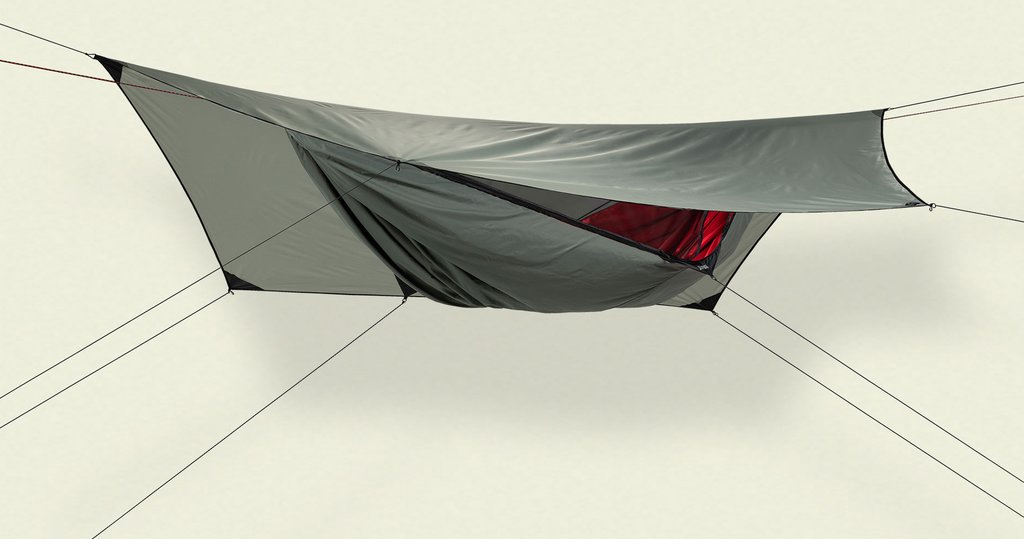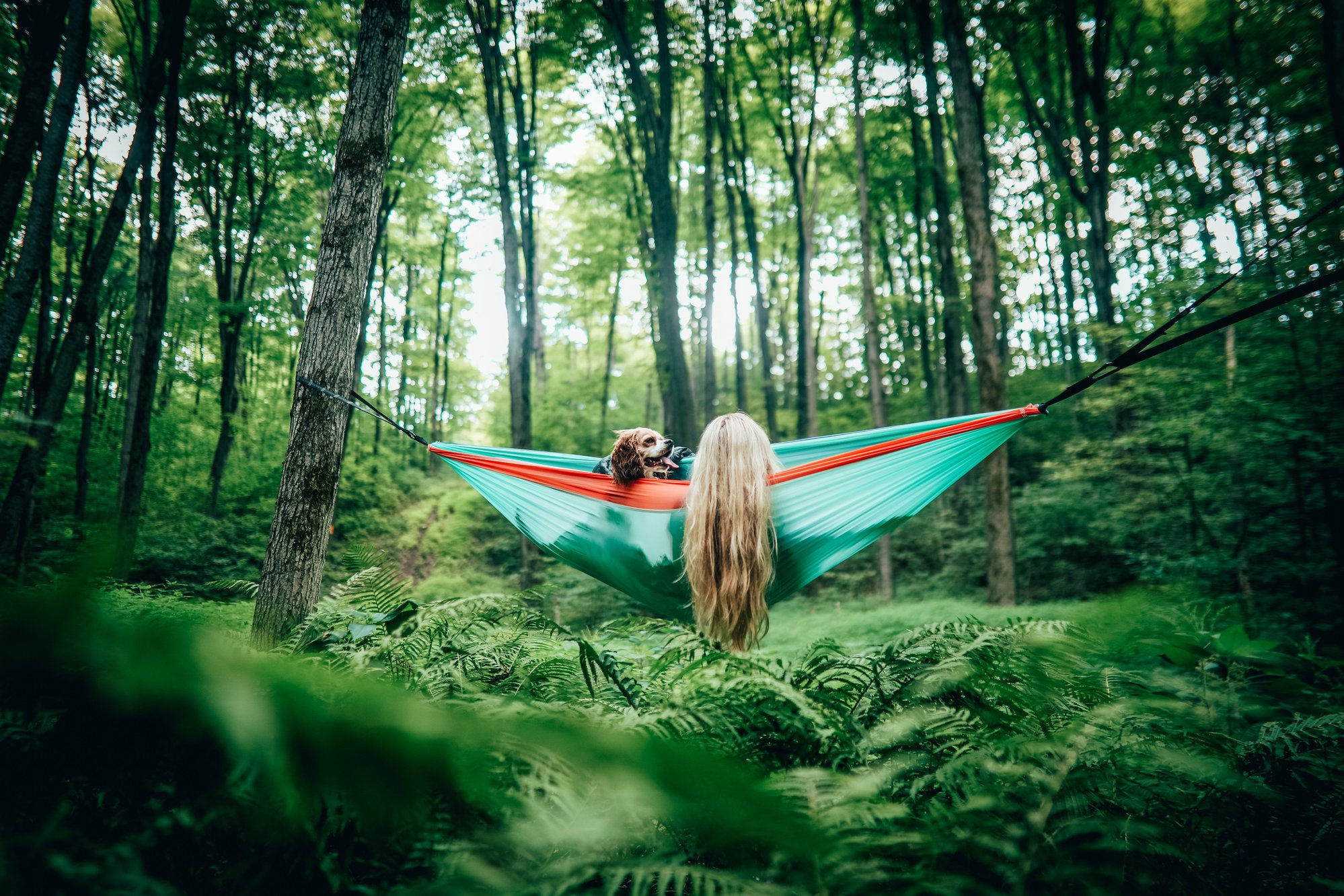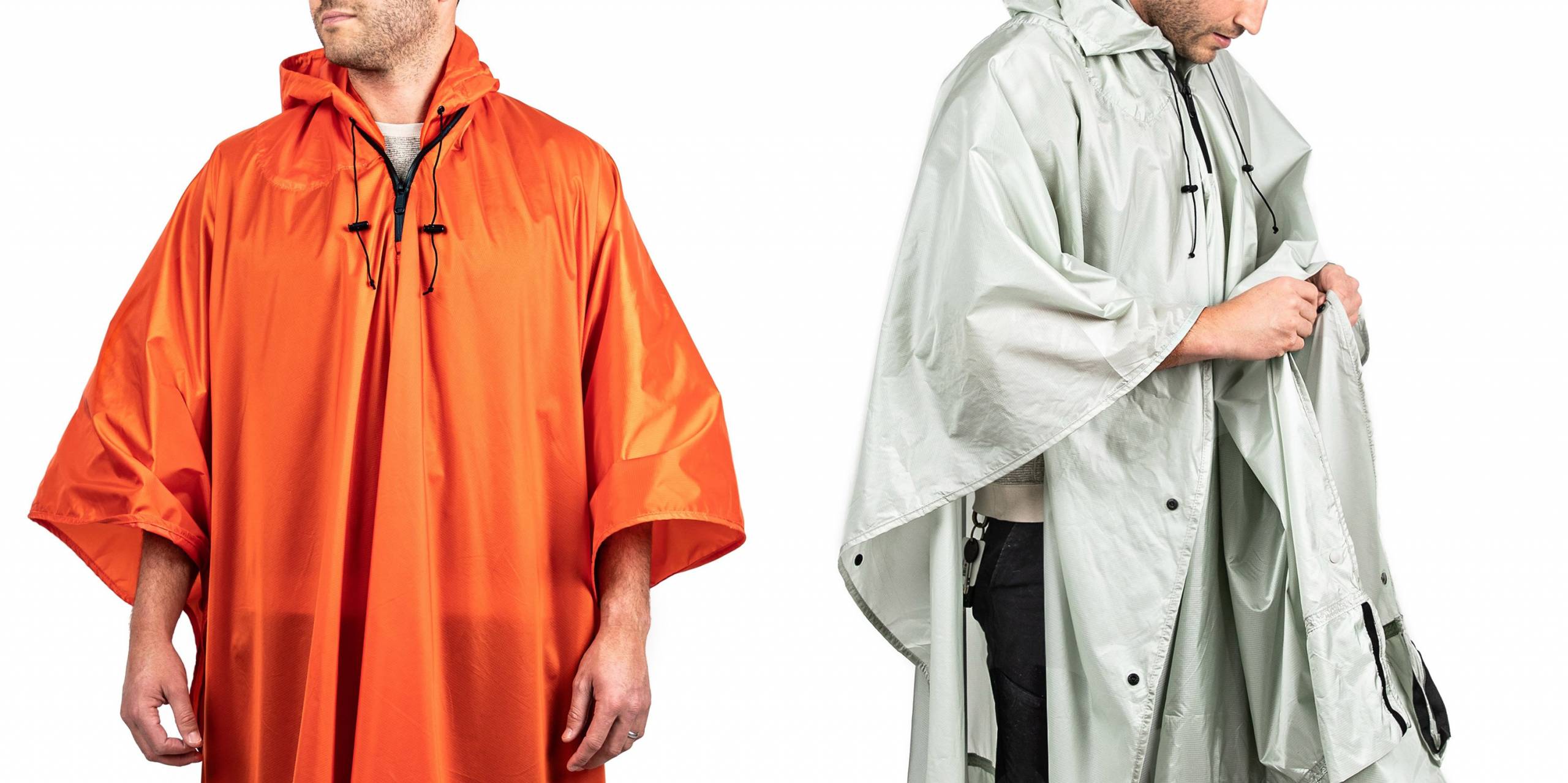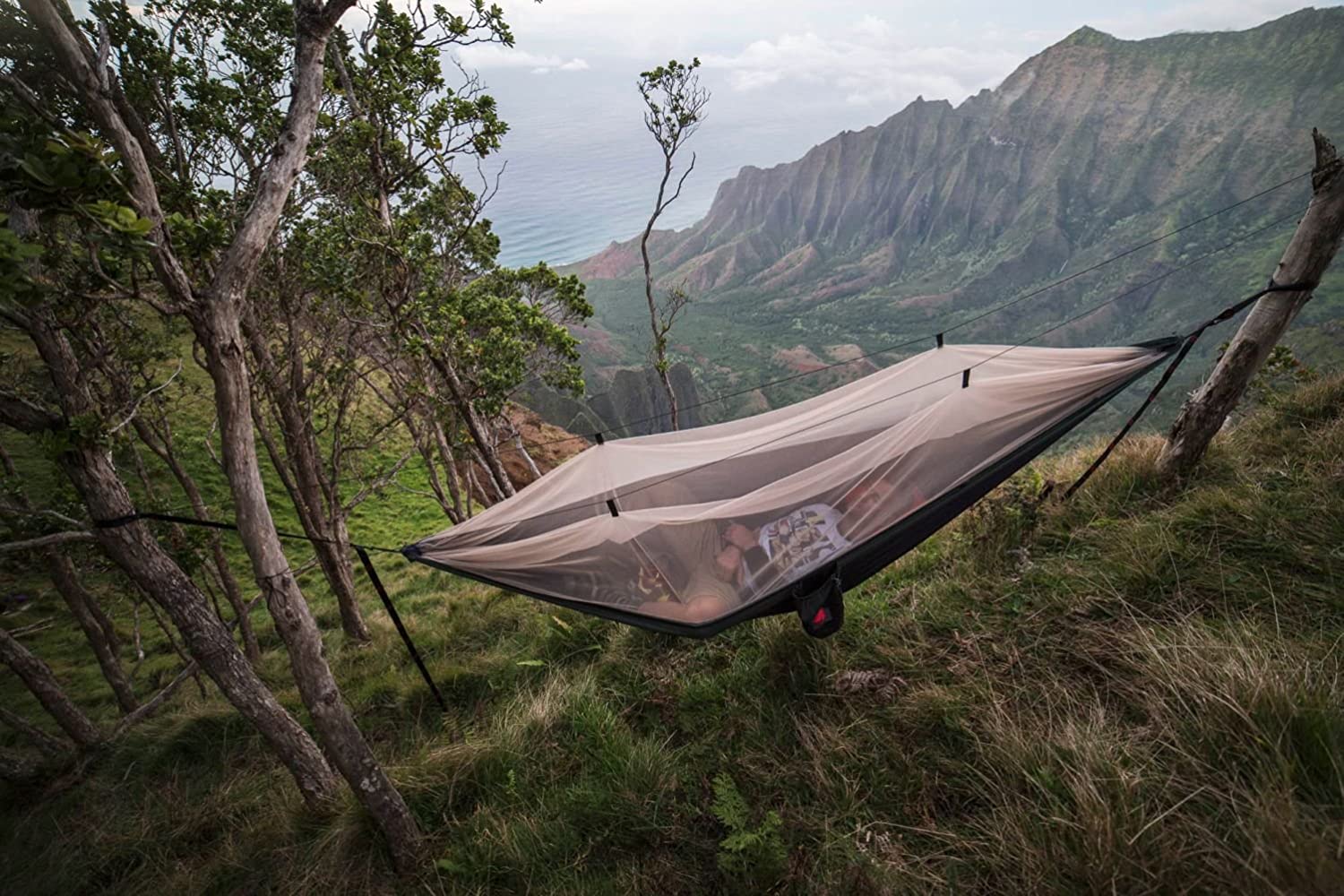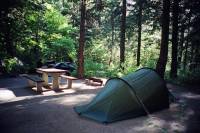
No matter how you like to get your swing on, there’s bound to be a hammock made for you. Here we review a variety of styles to satisfy a wide range of budgets and needs.
Hammocks targeted at camping and backpacking have recently become some of the most popular outdoor accessories. It’s easy to understand why; hammocks are blissfully relaxing.
In recent years, lighter, more packable, diagonal-laying hammock styles have supplanted the heavy, old-school canvas or rope hammocks that used to hang in almost every suburban backyard.
Now you can choose from hardcore hammock shelters that can fully replace your regular tent or ultralight wisps of nylon that pack up smaller than a can of beer.
And even the old spreader bar style (also called a bridge or lay-flat) has come back into style. as companies have created new lighter and more packable versions.
We’ve tested and reviewed lots of options and chosen the camp hammocks we think are the best choices in 2022. There’s bound to be one (or three) that will fit your backcountry and backyard needs.
Scroll through to see all of our recommended buys or jump to the category you’re looking for:
The Best Camping Hammocks of 2022
Best Overall Hammock: Kammok Mantis
Conceived when the founder tried to use a few of the popular parachute hammocks on a backpacking trip instead of a tent — they ripped and failed during the night — Kammok has hewn to a mandate from the beginning to produce hammocks with high-quality materials and innovative designs that won’t let you down.
The Mantis ($239) is the pinnacle of Kammock’s line for dedicated hammock tents. It offers a pricier ultralight version for $270 and an interesting tent/hammock hybrid, the Sunda 2.0 at $420. And it offers a lot of features in a well-thought-out, comprehensive package for those who need a do-it-all camp hammock.
Hammocks all serve the same basic function, with a few variations, so the attention to detail put in by the manufacturer can make a brand stand out. There are few, if any, off-the-shelf components with the Mantis.
The mini carabiners are a patented 13kN design, and the hammock hanging cords are light, high-strength polyethylene with a slick “continuous loop” sliding adjustment format. And it comes with no-stretch, low-bulk Nanoweave tree straps.

Other nice features include the hammock body made out of a durable ripstop diamond-weave 40D nylon. It also features a removable bug net crafted from a special mesh that allows for better stargazing. And the 15D nylon rainfly is built with Hypalon-reinforced guy-out points for extra strength in scary storms.
- Best for: All-around camping, long backpacking trips
- Total weight: 2 lbs., 14.5 oz.
Pros:
- Light
- Sturdy with well-thought-out details
Cons:
- Doesn’t include two extra stakes for the hammock guy-outs
Check Price at evoCheck Price at Kammok
Runner-Up Best Hammock: Lawson Blue Ridge Camping
This stellar hammock tent ($229 hammock only) is chock full of features but a fair bit heftier and bulkier than the Mantis, making it not quite as convenient for taking on extended trips.
But one of the best things about this camp hammock is it’s set up in a lay-flat configuration. So, those who can’t stand the claustrophobic feeling of a diagonal hammock, but want a full-featured experience, should look at the Lawson.
Beyond the comfort of sleeping in a lay-flat configuration, kudos go to this hammock tent for features like the spacious loft of the upper mesh via shock-corded arch poles at either end (which is a fine no-see-um mesh) and the ability to pitch this hammock on the ground like a regular tent. Though on the ground, it feels more like you’re sleeping in a tight bivy sack.
The Blue Ridge is a solid, well-made hammock, but it does suffer from a more complicated design. The spreader bars are attached and supported with a bunch of cordage that converge for the hanging point, which introduces a lot of potential fail points.
The materials are overall solid and durable, but not quite up to the advanced fabrics and textiles found in more expensive options like the Kammok.
- Best for: Shorter backpacking excursions or trips where weight and size aren’t as much of a concern
- Total weight: 4 lbs., 15 oz. (including straps)
Pros:
- Comfortable
- Lots of room and can be set up on the ground
Cons:
Check Price at AmazonCheck Price at Cabela’s
Best Four-Season Hammock: Hennessy 4Season Expedition Zip
One of the advantages of a camp hammock is the ability to be pitched in a wider variety of terrain than a tent. Though swinging free in the air keeps you away from rough and uneven terrain, it also means you lose some of the insulating properties of sleeping on the ground.
The Hennessy ($270) gets around that by giving you a double layer of nylon in the bottom panel. This allows you to slip in the included open-cell foam pad to increase the temperature rating to about 40 degrees F. And then, you can add the included reflective space blanket above or below it to withstand freezing temps.
Across Hennessy’s collection, its marquee feature is an asymmetrical design. Similar to the diagonal construction of popular parachute hammocks, Hennessy hammocks differentiate themselves by allowing users to lie completely flat within the diagonal hanging position, offering solid support to the lower back.
- Best for: Those who like to camp in a hammock all year long
- Total weight: 5 lbs., 3 oz. (including straps)
Pros:
- Can easily adjust to battle a wide range of temperatures
Cons:
Check Price at Hennessy Hammock
Best Modular Tent Hammock: Warbonnet Outdoors Blackbird XLC
This excellent tent hammock ($200) is great for those looking for a wide range of customization options in a high-quality hang and don’t need an all-in-one solution. Warbonnet also constructs its hammocks to accept any new bits you spring for down the line. So, if you can’t quite afford your ultimate setup right away, you’ll be able to add on in the future.
Other highlights include a fully removable bug net, as well as new Dream-Tex fabric that’s lighter, stronger, and more comfortable than the previous nylon.
It also features the ability to reverse how it hangs so you can lie with your head to the left or to the right, as well as a strip of fabric in the top that keeps it up and off your head and feet.
- Best for: Tent campers who want a lot of options
- Total weight: From 1 lb., 5.75 oz. (single-layer version without straps)
Pros:
- Easy to build to your specs
- Can be set up on the ground
Cons:
- Maybe too many options for most people
Check Price at Warbonnet Outdoors
Best Budget Hammock: Klymit Traverse
Though the most affordable in the roundup, the Traverse ($55) is a well-made hammock constructed from a high-quality 75D polyester that’s durable, light, and extra comfortable. And while looking exactly like every other parachute/diagonal hammock on the market, the Traverse is made from a single panel instead of the usual three used in most designs.
This gives you a relaxing sleeping/chilling position that puts your body more easily on a flatter plane, avoiding the dreaded banana bend other hammocks can give you.
- Best for: Those who need a solid, no-frills camp hammock
- Total weight: 1 lb., 12.8 oz.
Pros:
Cons:
Check Price at AmazonCheck Price at Klymit
Best Eco-Conscious Hammock: Nakie Recycled
The glut of parachute hammocks on the market means you can find any number of generic choices that are usually more affordable. But the Nakie version ($98) is unique in that it’s made from 100% recycled material.
So if being eco-conscious matters to you, this is the right option for a casual hang in the woods. The hammocks are built with material equivalent to 37 post-consumer plastic bottles, and the company plants four trees for every hammock purchased.
- Best for: Taking with you everywhere in the outdoors
- Total weight: 2 lbs., 17 oz.
Pros:
- Made from 100% recycled material
- Lifetime warranty
Cons:
Most Versatile Hammock: BE Outfitter Campo
If you’re into getting the most out of your gear and want the ability to use your outdoor stuff in multiple ways, the BE ($85) is the hammock for you. Along with being a nice hammock for lounging, it can also transform into a waterproof poncho, tarp shelter, or groundsheet.
In hammock mode, the durable 70D nylon sheet gathers at each end for clipping into tree straps. Plus, a hidden waterproof zipper and hood can deploy when untethered to ward off rain showers. Snaps on the sides allow you to make short sleeves on the poncho for better mobility and protection.
- Best for: Those who like versatility in their camp hammock
- Total weight: 1 lb., 0.8 oz. (no straps or carabiners)
Pros:
Cons:
- You can’t wear it while lounging in it
Check Price at AmazonCheck Price at BE Outfitter
Runner-Up Most Versatile: ENO SkyLite
If you want a hammock that provides both functional shelter and ultimate chilling, consider the ENO SkyLite ($170).
The simple bridge design takes cues from tent construction by utilizing eco-consciously anodized DAC aluminum shock-corded poles as spreader bars that slip into fabric sleeves. And the suspended bug mesh canopy has a wide double-zipper opening that spans the hammock’s 7-foot length, making for graceful ingress and exiting.
At 7 feet long and 3 feet wide, the SkyLite feels quite roomy considering it weighs just 2 pounds. The flat-bottomed shape provides comfort in a variety of sleeping positions. Some users report durability issues with the bug net zipper.
- Best for: Campers who want a lay-flat hammock
- Total weight: 2 lbs.
Pros:
- Lay-flat comfort in a small, portable package
Cons:
- Can’t remove the bug net
Check Price at REICheck Price at Backcountry
Best Big Hammock: Tentsile Trillium 3-Person
Tentsile is known for its massive tree tents. The brand uses heavy-duty ratchets and burly webbing to create suspended surfaces that users often combine into multilevel structures in the forest sky.
The triangular Trillium “hammock” ($369) is perfect for car camping and casual afternoon hangouts. To set up the Trillium properly, you’ll need three strong and well-spaced trees.
Rated up to 880 pounds, the Trillium can hold three adults, six kids, or two adults and two kids on the taut but cushiony surface that makes for great sleeping or picnicking.
The Trillium is available with either a mesh or fabric floor and has storage pockets under each corner to stash clothes or supplies. It also features a central hatch in the middle for easy entry.
- Best for: Setting up for extended car camping or overlanding stays
- Total weight: 17 lbs., 1 oz.
Pros:
- Spacious
- Can sleep three adults comfortably
Cons:
- Very heavy
- Takes some time to set up and take down
Why You Should Trust Us
The GearJunkie team is chock full of avid hammock campers. To compile this list, we put our heads together and shared our passionate opinions on hammock camping.
Over the years, we’ve tested all kinds of hammocks in just about every setting you can imagine. From roadside car camping to thousand-mile thru-hikes, our hammock testing cycle never ends.
For this particular list, we’ve included hammocks that can be used for car camping and casual hangouts as well as a few backpacking models. Testing hammocks is a lot of fun, but we still made sure to pay extra attention to durability, ease of setup, and overall comfort.
Buyer’s Guide: How to Choose the Best Camping Hammock
Camping hammocks are versatile pieces of gear that can reliably replace a tent and provide the joy of daytime lounging.
There’s a certain bliss that comes with being suspended in a hammock, rocking gently as the breeze reminds you of your weightlessness. In the past few decades, hammocks have become increasingly popular with outdoor recreationists rediscovering the beauty of tent-free camping.
To those experienced outdoor sleepers who swear by the tent, hammock camping may at first seem like a novelty activity reserved for backyard fun. However, thanks to innovative product design and the development of handy accessories, hammocks have become a completely legitimate and viable alternative to tents.
We recommend all the hammocks on this list. They’re all potentially good choices, but we want to help you choose the best one for your specific camping needs.
Before you buy a hammock, consider exactly how and where you’ll be using it. Will it be mostly for daytime use? Will you frequently use the hammock in cold or wet weather? Are the areas where you plan to use your hammock buzzing with mosquitos?
Hone in on which features you can and can’t live without. Read on for more details regarding weight, value, ease of setup, accessories, durability, protection, and versatility.
Weight
Weight is an especially important factor for those who plan to carry a hammock from campsite to campsite. Though backpacking hammocks aren’t the focus of this list, we included both lightweight hammocks and heavier options.
First, it’s important to consider that the total weight of a hammock alone isn’t all that telling. To set up a hammock to sleep in, you’ll also need at least a suspension system.
This means ropes or straps that attach to the anchor points of your hammock, wrap around trees or other fixed objects, and keep the entire rig suspended.
A lightweight hammock and a heavy suspension system can easily cancel each other out. This same principle applies to rainflies and other accessories you may need.
Remember that lightweight materials are often thinner and more fragile than other options. Still, for those looking to shave grams off their total, it’s possible to put together a hammocking setup that’s significantly lighter than almost any one-person tent.
Ease of Setup
Setting up a hammock is a simple process that basically entails attaching your suspension system between two trees or other fixed points and hanging both ends of your hammock from the system.
Though the basic process is simple, some hammocks are quicker and easier to set up than others. In general, we recommend that you practice setting up your hammock at a park or in your backyard a few times before going hammock camping.
While many hammocks are set up according to a standard hammock design with two symmetrical anchor points and a cocoon-like shape, other hammocks on the market have slightly different designs that can add some tricky subtlety to the setup process.
Asymmetrical hammocks require the user is meant to lay somewhat diagonally inside the hammock to create a flatter sleeping surface.
Depending on your accessories, setup can become convoluted and somewhat arduous. If you need a bug net, we recommend purchasing one that’s built into the hammock’s construction. This will save you a step and shorten your overall setup time.
Whoopie slings are increasingly popular suspension system options that tend to be lighter and easier to adjust than many other suspension systems.
Other accessories that may need to be set up include a rainfly, an insulative underquilt, and a sleeping pad. For the sake of easy setup, we find it’s helpful to purchase accessories designed to be compatible with your actual hammock when possible.
Accessories
These days, there are a whole lot of interesting and potentially useful accessories available on the hammock market. Accessories can be essential in customizing your hammock to best suit your camping needs. Among some of the most useful and common accessories are rainflies, insulative underquilts, and bug nets.
Rainflies
Rainflies are waterproof nylon covers that protect your hammock from the elements — most notably, rain and snow. They function exactly like the rainflies that are found on tents and are made from the same DWR-treated nylon.
A rainfly should cover your entire hammock. We recommend purchasing one designed specifically for the make and model of your hammock. This will ensure proper coverage.
Many hammock owners like to use oversized rainflies that create an additional covered area outside the hammock that can be used for cooking during a rainstorm. Just remember: Extra material means extra weight.
Underquilts and Sleeping Pads
Insulative underquilts keep you from losing body heat through your exposed underside while lying in a hammock. On warm summer nights, an underquilt may not be necessary, but when it’s frigid out, they’re a must-have.
Basically, an underquilt is a blanket that hangs under your hammock and conforms to the shape of your body. The underquilt prevents heat from seeping out through your underside. Some high-end cold-weather underquilts are rated all the way down to -20 degrees Fahrenheit and are filled with either down or synthetic insulation.
They come in different lengths including full-body, half-length, or three-quarter length. Of course, a full-length underquilt will be the warmest option, but for those concerned with the weight of their kit, shorter quilts can be a great solution.
For hammock campers that prefer not to use an underquilt, a good sleeping pad can be a reasonable alternative.
Bug Nets
If you’re heading to notoriously buggy regions like the Pacific Northwest or the Colorado alpine, a bug net is essential. In a tent, bugs aren’t too much of a concern because tents typically come with fully enclosed mesh bodies. However, without a net in an open hammock, you’ll likely become dinner for hordes of mosquitoes.
For hammocks without integrated nets, separate ones are sold that fully enclose the hammock and usually open and close with a zipper.
Durability
Because most hammocks are made from thin nylon, the denier rating of the material will tell you a lot about the overall durability of the hammock. The denier rating describes the thickness of the material, and the higher the denier rating, the more abrasion-resistant the hammock. Ripstop nylon is also a trusty choice for hammock construction.
In general, treat your hammock like the fragile piece of gear it is. Because hammock material is thin, it’s vulnerable to ripping, melting, and fraying. If you handle your hammock with gentle care, it should last for many years — especially if it’s high-quality like the options on this list.
Weather Protection
Some hammocks are made from material that is treated with a DWR coating. While this can be helpful, ideally your hammock will never actually get wet.
Be sure to set up your hammock so that it is as protected from the elements as possible. This usually means a good-quality rainfly, but the positioning of your hammock is also important. Avoid super-windy areas.
As a source of shelter, a hammock really can be as effective as a tent in most scenarios. With proper setup and the right accessories, a night in a hammock should be warm, cozy, and dry — even when it’s pouring rain or dumping snow.
Versatility
The primary job of a camping hammock is to provide a comfortable and reliable shelter for sleeping or lounging outside. That said, a little bonus versatility is always a good thing.
Though we don’t generally recommend sharing a hammock overnight with another person for comfort’s sake, two-person hammocks tend to be more versatile than one-person hammocks. On our list, the ENO DoubleNest is over 6 feet wide, meaning it can easily be used as a two-person lounging zone, or as a nice couch to sit in sideways during restful days in camp.
While some users may shy away from extra material because it means extra weight, it really is a nice luxury to be able to use your hammock for more than just hunkering down at night.
FAQ
Is Hammock Camping Safe?
Yes. When set up properly for the given conditions, hammocks are a safe alternative to tents when camping. Make sure you know how to set up your hammock before you go, and don’t forget to check the weather.
Accessories like bug nets and rainflies help ensure that you’ll be prepared for sleeping outside in a hammock.
Is a Hammock Better Than a Tent?
Tents and hammocks are different, but they both provide adequate and reliable shelter for sleeping outside. Personal preference will determine whether you decide to use a hammock or a tent.
That said, there’s nothing better than a hammock for that sweet sensation of being gently rocked to sleep.
Is a Hammock Warmer Than a Tent?
The short answer is no. Generally, a hammock is colder than sleeping in a tent, as the ground offers a surprising amount of insulation. That said, a hammock that’s geared out with proper insulation and shelter can be comfortable and warm — even in subzero temperatures. Be sure to find the right sleeping pad or underquilt for maximum warmth.
For the most severe winter conditions, four-season tents are still the gold standard.
Is a Double Hammock Too Big for One Person?
A double hammock is made to support two people and is usually rated to safely hold at least 400 pounds. Two people can share a double hammock, but it’s usually pretty uncomfortable to actually sleep together with another person in a hammock.
Many single users prefer double hammocks. The extra material offers additional space to spread out, and some sleepers like to wrap the hammock’s material around them like a cocoon. Double hammocks are generally heavier, but they offer some nice comfort that you may find is worth the weight.



